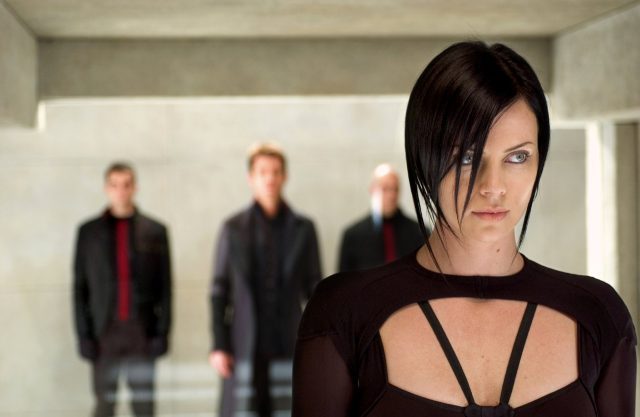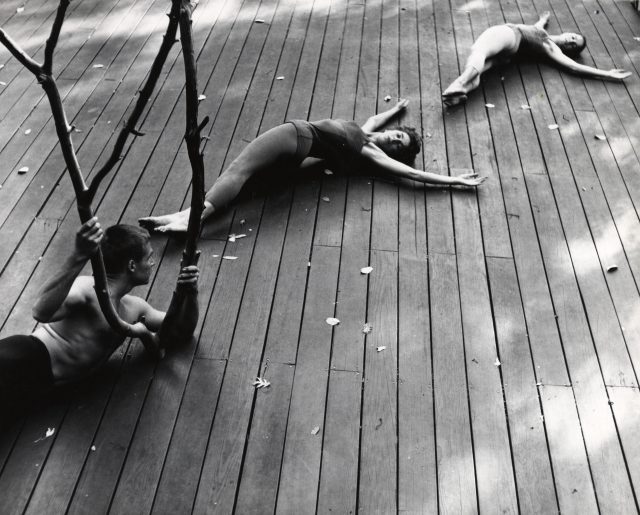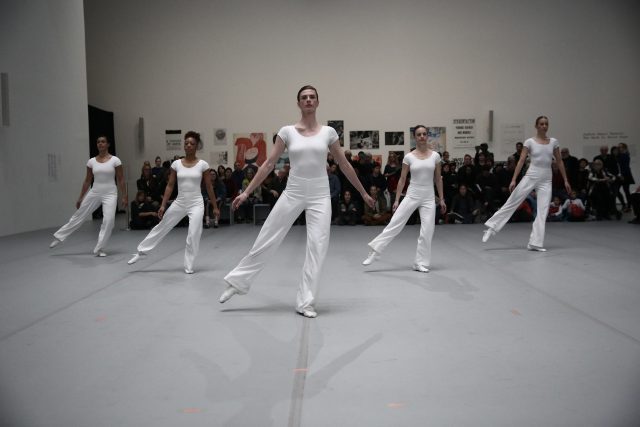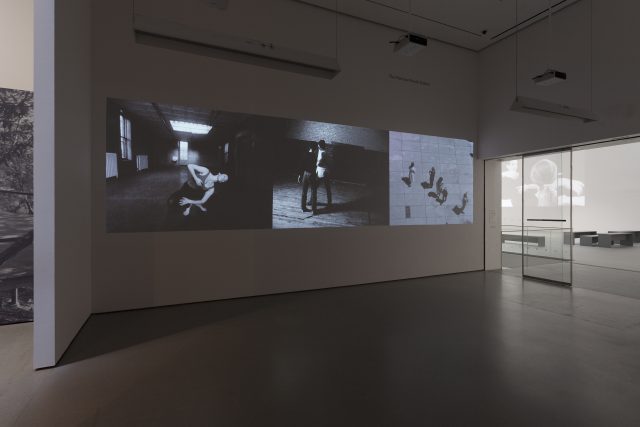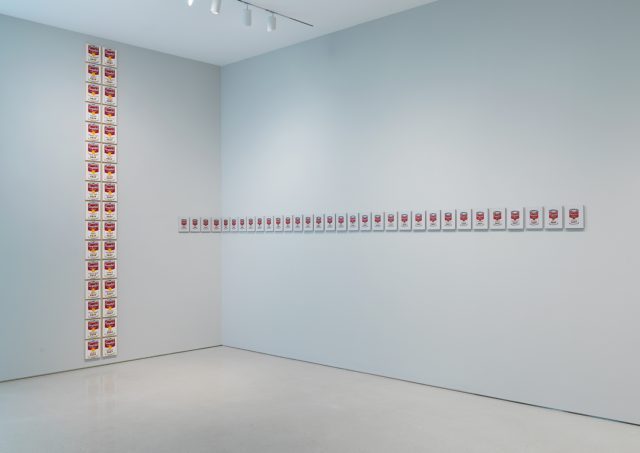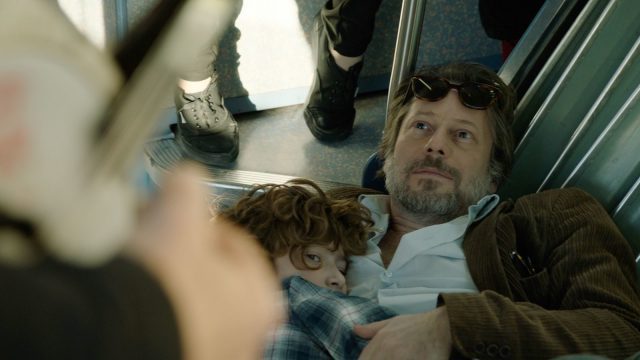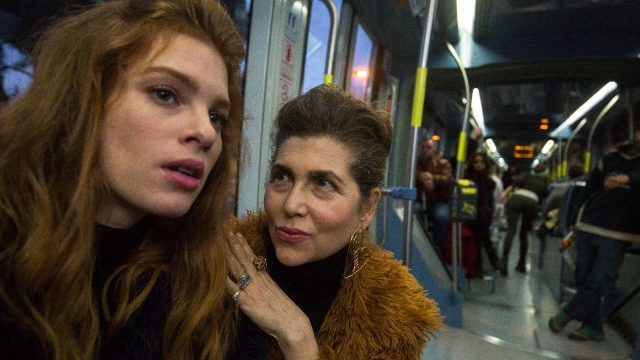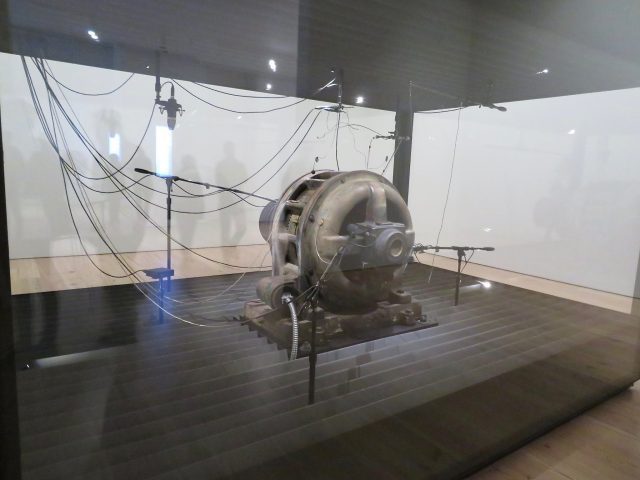
Cotton gin motor is centerpiece of Kevin Beasley exhibition at the Whitney (photo by twi-ny/mdr)
Whitney Museum of American Art
99 Gansevoort St.
Through March 10, $18-$25
Performances January 26, February 16, and March 2, free with museum admission
212-570-3600
whitney.org
In 2011, artist and automotive enthusiast Kevin Beasley went to his family’s Virginia farm and was surprised to see that it was planted with cotton for the first time. The Yale MFA candidate picked some of the cotton and brought it home with him, wanting to incorporate the material into his work. Searching on eBay, Beasley found a 2200-pound cotton gin motor for sale in Maplesville, Alabama, where it had been in use from 1940 to 1973, overlapping with the heart of the civil rights movement; Selma, where the march to Montgomery began in 1965, is only thirty miles away from Maplesville. Beasley, now based in Brooklyn with a studio in Astoria, then combined the personal with the political and the historical to create the powerful exhibition “View of a Landscape,” continuing at the Whitney through March 10. The centerpiece of the show is the cotton gin motor, which Beasley transported from Alabama following the route of the Great Migration. At the Whitney, the motor is encased in a soundproof glass and steel vitrine in a room by itself, as if not only on display but on trial. Beasley has attached multiple audio wires to the motor, turning it into a musical instrument; the wires connect to modular synthesizers and processors in the next room, emitting electronic sounds throughout the day, evoking Robert Morris’s 1961 “Box with the Sound of Its Own Making.”
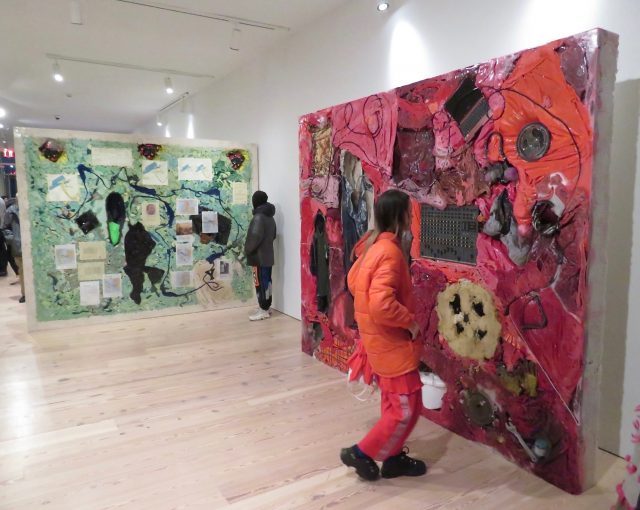
“Campus” and “The Acquisition” are two of three freestanding walls that are part of Kevin Beasley’s “View of a Landscape” (photo by twi-ny/mdr)
The installation is supplemented with a trio of slab sculptures, eight-hundred-pound eight-by-ten-feet freestanding walls made of articles related to Beasley, his family, and slavery, focusing on race, labor, and ancestry. Titled “The Reunion,” “Campus,” and “The Acquisition,” they are like excavations dug out of the soil, composed of polyurethane resin, raw cotton, garbage bags, clothing, du-rags, music equipment, and elements from Beasley’s time at Yale, from his cap and gown to harlequin masks. Eli Whitney, who invented the cotton gin in 1793, was also a Yale grad; the Eli Whitney Students Program currently helps those who have taken five or more years off from school. In addition, Yale itself was named after slave trader Elihu Yale, and Eli Whitney is related to Harry Payne Whitney, who married Gertrude Vanderbilt, the founder of the Whitney Museum of American Art in 1931. The installation is a deep dig, no stone left unturned as Beasley puts it all together into a cohesive unit
.

Kevin Beasley kicked off the first of several related concerts on January 12 at the Whitney (photo by twi-ny/mdr)
On January 12, Beasley, who was an artist-in-residence at the Studio Museum in Harlem in 2013-14, played the first of four concerts using the cotton gin motor, manipulating the many wires hooked up to several synthesizers in the listening room. He was joined by multi-instrumentalist, songwriter, and vocalist Taja Cheek for two hours of compelling noise. Wearing a Frederick Douglass sweatshirt and a serious mien, Beasley alternated sounds, from the industrial roar of the motor to space-age riffs, not smiling until the show was over. I sat on the large woofer near the center, which made it feel like I was experiencing it in Sensurround, the bass reverberating through my body. If it’s not completely packed, you should walk around, as different sounds are emitted from the various speakers. Recognizable words occasionally came through as well, including “Freedom” and “I’m here.” There will also be concerts (free with museum admission) on January 26 at 6:00, 7:00, and 8:00 with Eli Keszler, February 16 at 6:00 with Beasley, and March 2 at 6:00, 7:00, and 8:00 with Jlin. The line started about an hour before showtime, so get ready. And Beasley will be in conversation with Daphne Brooks and Jace Clayton on February 1 at 6:30 ($10).
